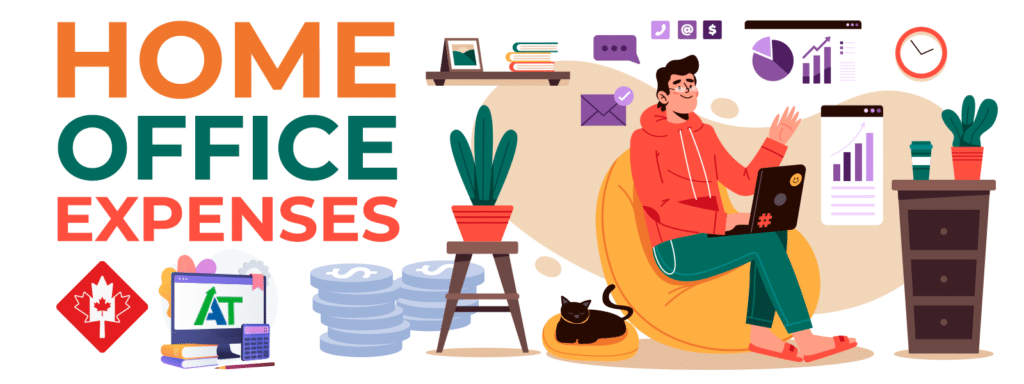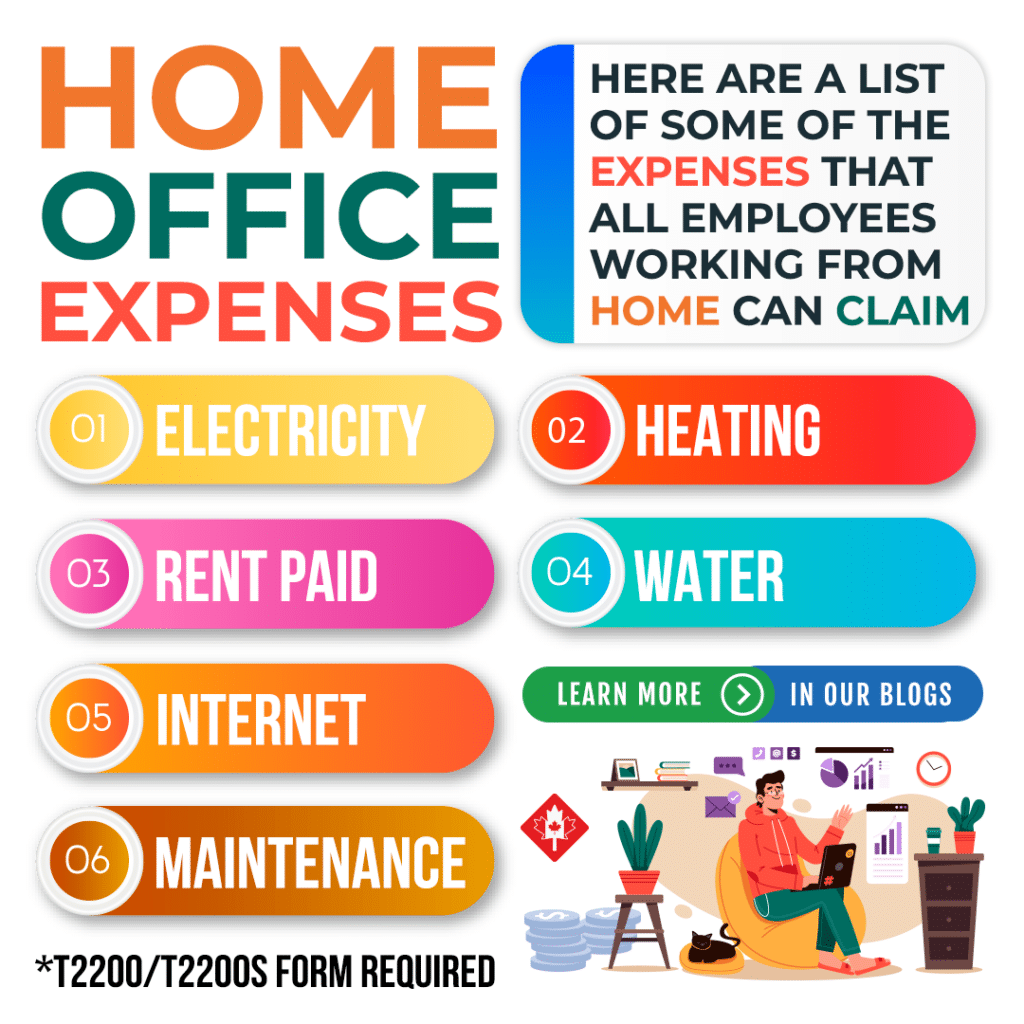
Home Office Expenses for Employees & Self-Employed Individuals
When an individual uses a space in their home to conduct business activities, whether it’s for employment or their own business, they are able to claim certain expenses on an income tax return. Home office expenses include work-space-in-the-home expenses, office supplies, and specific phone expenses.
Keeping track of these expenses and saving receipts, invoices, and any other relevant documentation lets you claim it as a deduction on your return. A deduction reduces the amount of income you pay tax on, thus reducing your overall income tax owed.
Temporary Flat Rate Method to Claim Home Office Expenses
When employed and working from home, the temporary flat rate method simplifies your claim. Eligibility is based on whether you worked more than half of your work hours from home for at least four consecutive weeks in the year. You can claim $2 per day you worked from home during the period plus any additional days worked at home caused by the COVID-19 pandemic. The maximum deduction from this method is $400 which constitutes of 200 working days in 2020 or $500 from 250 working days per individual in 2021 and 2022.
With this method, your employer does not need to complete and sign a Form T2200. Documents are not needed to support your claim as well.
Detailed Method in Claiming Home Office Expenses
This method is used when an employee is required to work from home or did so because of the COVID-19 pandemic, but needs a completed and signed T2200S or T2200 form from your employer. The amounts claimed must also be supported by documents as proof such as receipts and invoices.
Understanding Your Work Space Use for Business
To claim using the detailed method, you need to calculate the size and use of your work space. This is separated between employment and personal. The size of your home and work space compares the size of your home to the size of your work space. All finished areas within the home, including hallways, bathrooms, and kitchens are considered in the size of your home. Once you have the size of your home in square metres or square feet, calculate the size of your work space. With an open concept design, use a reasonable percentage of the open space as your work space. The entire floor space cannot be used.
Once you have the areas of your work space and home, use the following formula to calculate the percentage of your home used as a work space:
(Size of Your Work Space / Size of Your Home) X 100 = Your Work Space as a % of Your Home
The number of hours the space is used for work affects the amount of expenses that can be claimed. This is dependent on the type of work space, between a common (shared) area or designated room.
Common (Shared) Area
A common area is a space that has other purposes besides work. Some examples include if you worked at a kitchen table or use a shared family computer room.
If this is the case, the claim is based on your employment use of the space. This is calculated using the number of hours the space is used for work. Use the following formula to calculate the percentage of time you can claim for the work space:
(Hours Worked / 168 Hours (Total Hours in a Week)) X 100 = % of Time You Can Claim for the Work Space
Designated Room
The work space is considered a designated room if it is only used for work. One example is a spare room.
If this is the case, your claim is not affected by the number of hours the space is used for work. The claim will use 100% of the work space expenses.
What Can You Claim as Home Offices Expenses?
Salaried Employees can claim electricity, heat, water, utilities portion of condominium fees (electricity, heat, and water), home internet access fees, maintenance and minor repair costs, and rent paid for a house or apartment where you live.
Commission Employees can claim everything listed above and more. This includes their home insurance, property taxes, and certain leases related to earning commission income. Some of these leases include that of a cell phone, computer, laptop, tablet, or fax machine.
Salaried and Commission Employees can not claim mortgage interest, principal mortgage payments, home internet connection fees, furniture, capital expenses (replacing windows, flooring, furnace, etc), or wall decorations.
Office supplies and phone expenses can be claimed if not reimbursed by your employer as well. This is if they are required for work but are claimed on a different part of the T777 or T777S form, outside of your home office expenses.
Limitations on Home Office Expenses
Work-space-in-the-home expenses that can be claimed are limited when:
- You only worked part of the year from home.
- Expenses can only be claimed in the part of the year you worked from home. You can’t claim the full year’s expenses in this case.
- You have multiple income sources.
- Work-space-in-the-home expenses can only be claimed from the income related to the expenses.
- Your expenses exceed your income.
- When employed, work-space-in-the-home expenses can’t make a loss from employment income. The expenses can be carried forward to the next year if you are reporting income from the same employer. Still, a loss can not be created or increased by the carry forward.
- For commission employees, the expenses can’t exceed your commission income.
Self Employed Home Office Expenses
If you use your home to as a workspace, it can also be claimed on your tax return. It must be either your primary place of business or the space is used only to earn business income regularly and on an ongoing basis. This can be to meet your clients, customers, or patients.
In this case you can deduct part of your maintenance costs which include heating, home insurance, electricity, and cleaning materials. Additionally, part of your property taxes, mortgage interest and capital cost allowance can be claimed. It is still based on the area of the workspace divided by the total home area. When the space is used for both business and personal, a percentage calculated from the hours used in a day for business divided by 24 hours (the total hours in a day) is applied to the expenses. When the space is only used for part of the week, the same consideration applies.
Business-use-of-home expenses can’t be used to create or increase a loss. It can’t be more than your net income prior to deducting these expenses. Instead, the lesser of the following amounts can be deducted:
- Any amount carried forward from the previous year plus the business-use-of-home expenses incurred in the current year.
- Amount of net income (loss) after adjustments.
The expenses that could not be deducted can be carried forward as well.
Find out more by checking out the CRA’s guide on Home Office Expenses by clicking here. For the detailed method or self-employment, make sure you keep six years of records. This includes the T2200 or T2200S form (Declaration of Conditions of Employment) and any receipts, supporting documents, and records.

